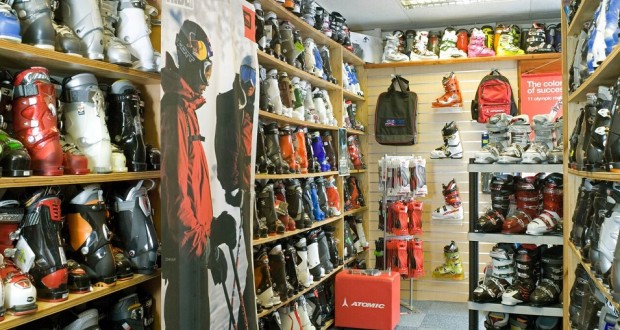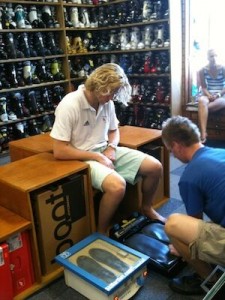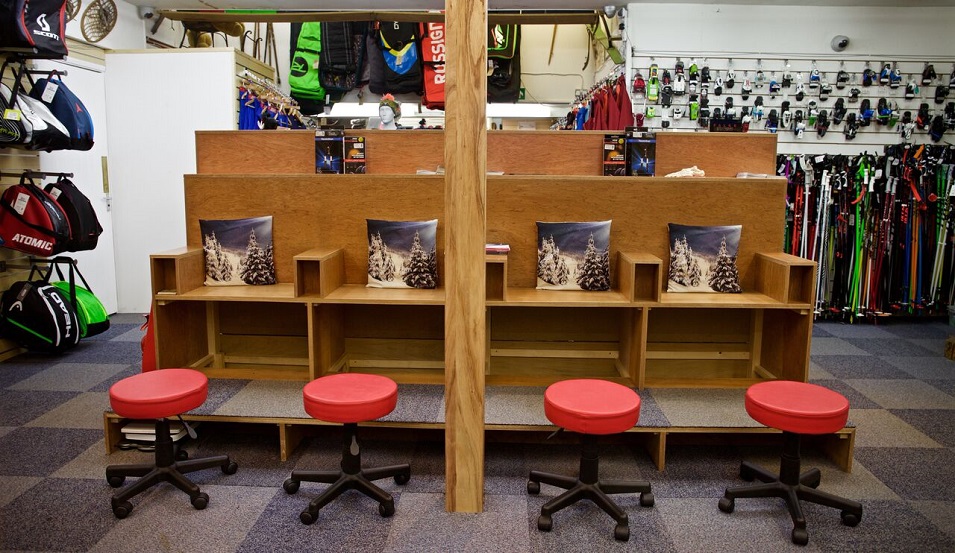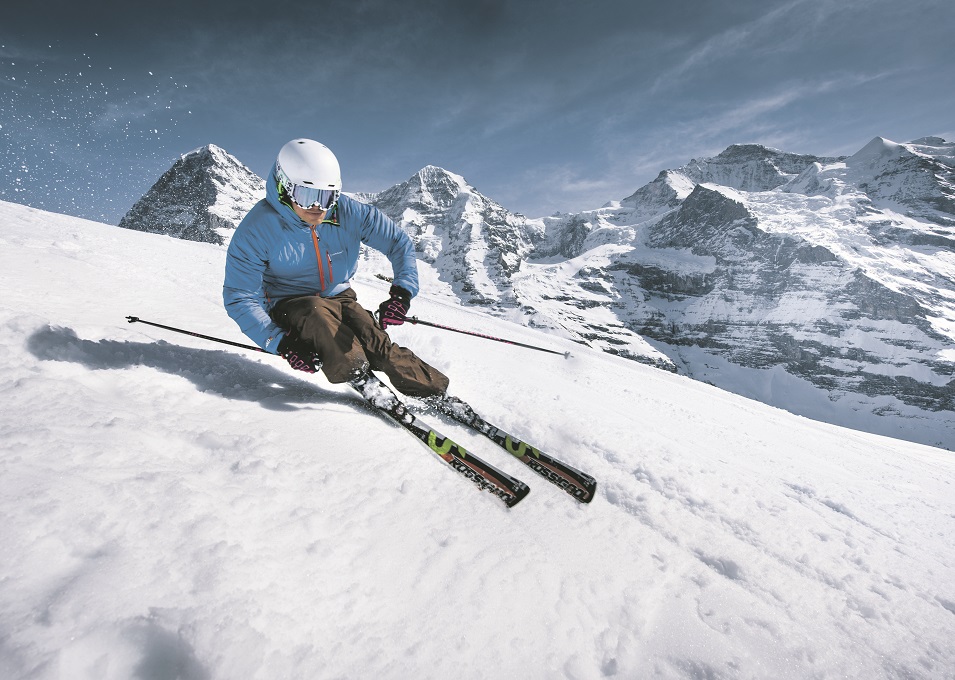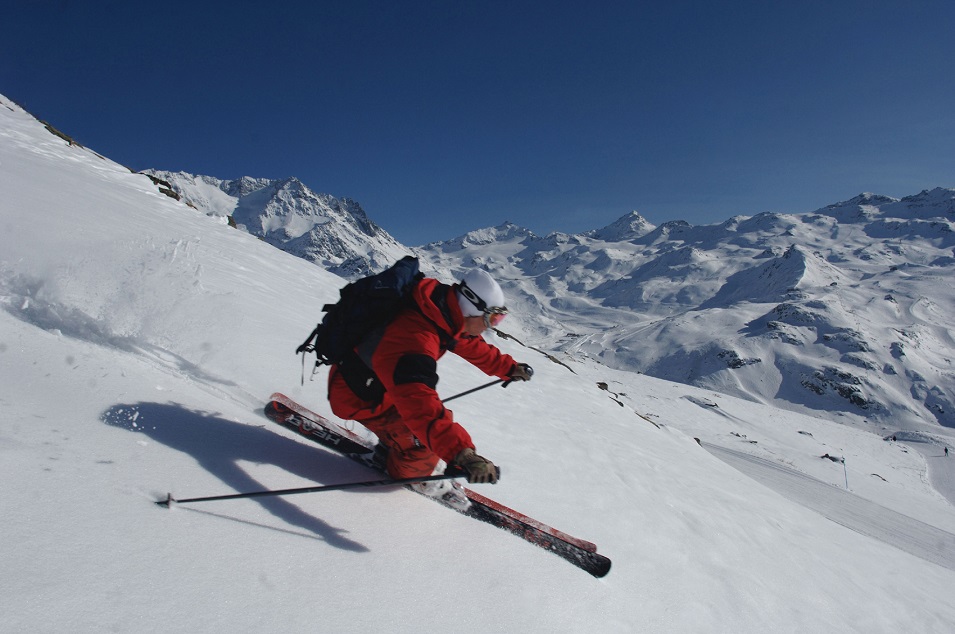The Art of Boot Fitting – 5 Key Points To Look Out For When Buying Boots
Before you invest in your next ski boots, make sure you get correct advice from an experienced boot fitter, and choose a ski shop with a reputation for boot-fitting expertise and a good range of boot models.
1. Using a specialist boot fitter is a must so make sure there is good communication between you and fitter, and make sure they are knowledgeable and listens to what you need. They should ask questions like – ‘What type of skiing do you prefer, where do you prefer to ski? Is there anything holding you back in your skiing? How many times are you going to ski each year?’ Questions like this help the fitter to choose an appropriate boot. And help by advising them if you’ve had any previous issues with ski boots, even rental ski boots.
2. The fitter should take the time to analyse your feet.
measure your length and width, shape of your foot; the bumps, bunions and instep height. They’ll look at the size of your calf and your posture and movement in the boots.
3. Fit around your foot should be a snug close fit, like a firm handshake.
• A properly fitted boot will give you the advantage of no rubbing or pressure points – boots can be adjusted to your foot shape and most boots have custom heat-mouldable shells.
• A custom-fitted footbed will increase the comfort and performance fit inside your boots – the majority of feet need extra support to prevent the foot rolling around and ensure your movements transfer accurately to your skis.
• Boots should be comfortable to allow you to ski all day with happy feet!
4. Boots need to be appropriate to your ability and strength – the flex needs to move with your body movements.
A more experienced skier needs a higher, stiffer-flexing boot that mirrors experienced ski movements and attuned ski muscles. A developing skier needs a slightly-softer flexing boot, for freer movements and to keep in balance. The right boot will help you progress and have fun.
• Choose a boot appropriate to where you want to ski – a softer flex will give you a more fluid feel for freestyle and off-piste skiing, however a harder stiffer flex will give you more power transfer to your edge for high piste performance. Boots also now have features like walk modes for hiking and ski touring.
5.The correct fit is much more important than boot make or appearance.
• No preconceived ideas of what’s best as every foot is different so be open-minded, and your foot needs to choose the boot, not your blinkered heart. (Bit like Harry Potter and his wand!)
• Don’t be hung up on the colour, make or model – you’ll definitely regret making a decision not based on comfort and fit.
A good fitting ski boot means increased comfort, better edge grip, smoother turns, better posture on your skis, more performance and less aching legs! All movements in your skiing start from your feet, as they’re the closest link to the snow, which is why boots are the most important aspect to enjoying your skiing.
Finally, for maximum enjoyment from skiing, never compromise on the comfort, fit and performance of boots!
visit SkiBartlett or email info@skibartlett.com for more information or to make a ski boot fitting appointment with them.
 Good Ski Guide The Worlds Most Loved Ski Guide
Good Ski Guide The Worlds Most Loved Ski Guide
